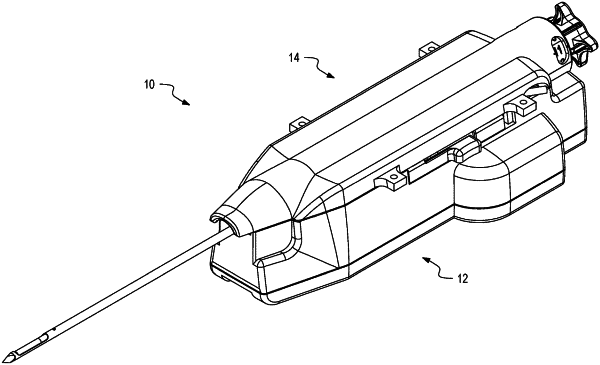| CPC A61B 10/0275 (2013.01) [A61B 10/0283 (2013.01); A61B 2010/0208 (2013.01)] | 20 Claims |

|
1. A method of operating a biopsy apparatus, the biopsy apparatus comprising an instrument set configured for removable coupling with an instrument drive unit, the instrument set comprising an instrument set housing, an elongated outer cannula having an axial outer cannula lumen, a proximal portion coupled to the instrument set housing, and a distal portion having a tissue receiving aperture in a side wall thereof in communication with the outer cannula lumen that comprises a cutting board, an elongated inner cannula disposed within the outer cannula lumen, an aspiration vent fluidly coupling the outer cannula lumen to atmosphere, and an aspirate valve interposed in the aspiration vent, the inner cannula having an inner cannula lumen in fluid communication with the tissue receiving aperture in the outer cannula via a distal opening in the inner cannula, the method comprising:
introducing the distal portion of the biopsy apparatus in tissue so that the tissue receiving aperture in the outer cannula is positioned adjacent the tissue targeted for biopsy;
applying vacuum though a proximal end of the inner cannula lumen;
translating the inner cannula relative to the outer cannula to contact the cutting board so as to sever tissue prolapsed into the tissue receiving aperture and seal the inner cannula lumen against fluid intrusion from the outer cannula lumen;
translating the inner cannula proximally relative to the outer cannula; and
opening the aspirate valve to draw air into the biopsy apparatus through the aspiration vent to relieve a vacuum formed distal of the severed tissue.
|